John Hurrell – 14 June, 2018
Te Kahurangi King's mark-making and rendering procedure usually varies between delicate and precise grey pencil drawings and coarser, less defined, coloured blocks of greasy crayon or smudgy pastel. The emphasis is on process and momentum, the excitement of creating on the spot—rather than carefully thought through in advance composition. Sometimes implements (like pencil tips) are pragmatically tested in the drawing itself, checking points so that squiggly lines are flowing properly.
Auckland
Susan Te Kahurangi King
Paperdwellers: Works 1967 - 1980
Curated by Bridget Riggir-Cuddy
1 June - 14 July 2018
This Artspace show is a confused muddle of mixed, conflicting, agendas.
On the one hand it is a curated solo exhibition by the renowned drawer, Susan Te Kahurangi King, who since the age of eight, has never spoken. Visual art is her dominant (apparently only) means of communication, and Bridget Riggir-Cuddy has made an impressive selection, searching through many private collections and the archives of the artist’s Wellington dealer, picking out a surprisingly varied assortment of works between 1967-80.
These unplanned, sprawling drawings—they could be called ‘large sophisticated doodles’— made with pencil, crayon and pastel, often on oddly shaped pieces of paper or found business fliers, usually seem to finish arbitrarily. They startle with their riffing on commonplace objects that she gets fascinated by, such as electric fans, bicycle wheels or snorkelling goggles, and repeats throughout the composition. These objects get inserted into a sort of cascading lava flow of writhing elements. Its other aggregate forms usually include humans or animals remembered from animated movies or comics, their rubber-limbed cartoony postural variations repeated over and over.
Te Kahurangi King’s mark-making and rendering procedure usually varies between delicate and precise grey pencil drawings and coarser, less defined, coloured blocks of crumbly crayon or powdery pastel. The emphasis is on process and momentum, the excitement of creating on the spot—rather than carefully thought-through-in-advance composition. Sometimes implements (like pencil tips) are pragmatically tested in the drawing itself, checking points so that squiggly lines are flowing properly.
Besides being a one person show, this presentation is intended also to be a community project where visitors are urged to draw (inspired by King’s practice) on interspersed desks loaded with paper and pencils, so that their efforts can be pinned up in the back room. Their participation is seen as a form of collaboration, and if studying these artworks (and making their own) persuades somebody that art is a worthy interest that they hadn’t considered previously, then surely it is a good thing. However the results, very casually pinned on the walls of the back gallery, don’t seem very inspiring. There’s no finesse in the presentation. And when you compare it with a hugely successful participatory event like Isabel and Alfredo Aquilizan’s From Pillars to Posts: Project Another Country at AAG, well… why bother?
Even if this aspect were successful, there is an issue around King’s twenty-five drawings, eight of which have school desks positioned directly in front, and buttresses on either side. Because many of her graphite lines are quite faint, her works require close proximity so you can scrutinise the detail—and the exhibition design by Anto Yeldezian prevents that. Your face is prevented from getting close to the image. It’s exasperating if you like looking closely at art.
In fact one gets the feeling that this show is really not about Te Kahurangi King at all, but about Yeldezian’s Artspace ‘installation.’ The screens are dominated by black metal struts, or red-oxide vertical wooden beams, and the screen and wall surfaces in the main gallery and ‘participatory room’ feature imposing dark blues, checkerboard motifs and linear grids. Susan Te Kahurangi King is completely upstaged. I think the insensitive ‘loud’ installation insults her work.
I wonder whether this is because she is perceived as ‘speechless.’ Most institutions when installing solo shows discuss the exhibition design (and all published texts) with the artist or their representatives. It is best practice. Their final approval is essential. I suspect this consultation hasn’t happened.
There is also the irony of having four writers (even if one is a school pupil) commenting on the show in the gallery hand-out when the nature of the work is not conducive to theorising, if not antithetical to it. You might argue it comes from a pre-language state, and so any commentary is unsympathetic and in fact coercive (1).
The counter argument might be that thought can exist without language, and that artists’ intentions don’t control interpretation anyway—that artworks have their own lives and internal semantic structures, and any articulating voice is welcome. Four voices more so.
Nevertheless, although what I’m saying about the exhibition design is pretty damning—despite the ‘arty’ obstacles—Te Kahurangi King’s drawings are well worth spending some serious time with. They are rivetting but nonetheless odd. They are very strange in that they break the academic rules of what drawing is meant to be. Or what an artist’s mind is meant to be. Or what an artist is meant to be. Visit Artspace and see for yourself.
John Hurrell
(1) My review title alludes to Anna Rankin’s Vampire Eyes in the gallery handout. Especially the section, “…if it is true there is no address then words are just rag-dolls to beat you with.”
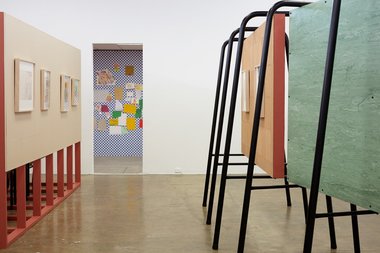
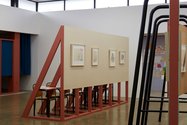
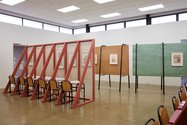
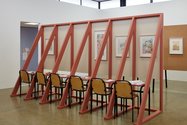
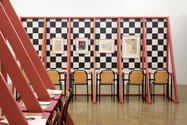
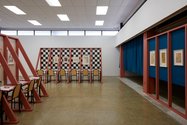
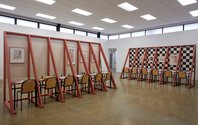
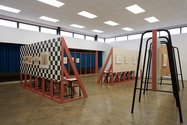


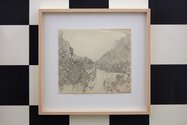



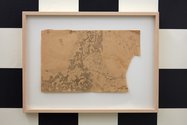

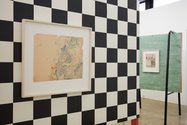

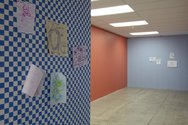
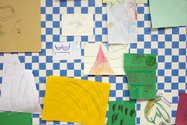
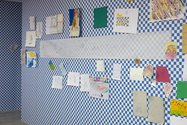
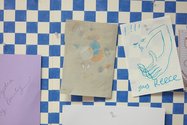
 Advertising in this column
Advertising in this column Two Rooms presents a program of residencies and projects
Two Rooms presents a program of residencies and projects



This Discussion has 0 comments.
Comment
Participate
Register to Participate.
Sign in
Sign in to an existing account.